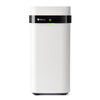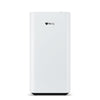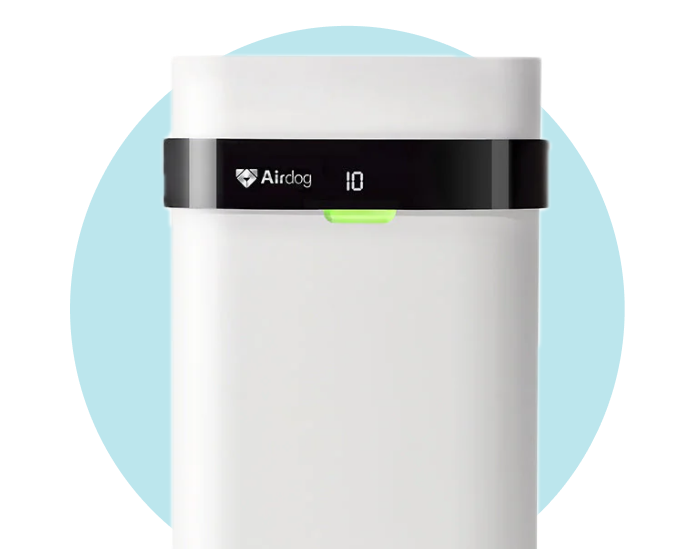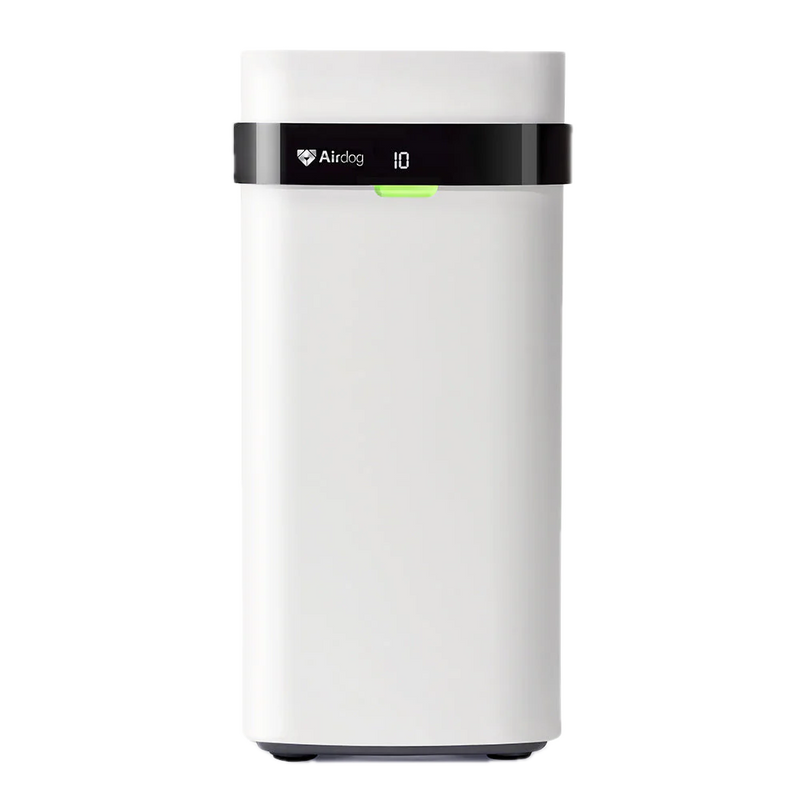How to Prepare for a Dust Storm
Dust storms, powerful and unpredictable natural phenomena, pose significant challenges to health, safety, and property. With the increasing occurrence of these storms around the globe, understanding the nature of dust storms, their causes, and the critical importance of preparation has never been more crucial. These storms, fueled by conditions such as drought, land degradation, and climate change, impact environments and communities profoundly.
Understanding Dust Storms
Dust storms present a formidable challenge to communities across the globe, particularly those in arid and semi-arid regions. These natural phenomena not only disrupt daily life but also pose serious health risks and cause significant damage to infrastructure. To effectively prepare for and mitigate the impacts of dust storms, a deep understanding of their scientific basis, causes, and effects is essential.
The Science Behind Dust Storms
-
Formation: Dust storms arise when high winds lift loose sand and soil from the ground into the air. Typically, they occur in areas where strong wind events are able to mobilize accumulated dry soil particles from bare or poorly vegetated surfaces.
-
Exacerbating Conditions: Several conditions can exacerbate the development of dust storms. These include drought, which dries out soil, making it more susceptible to wind erosion; land degradation, where practices such as overgrazing, deforestation, and unsustainable agricultural methods reduce the land's ability to hold soil; and climate change, which intensifies the frequency and severity of droughts and extreme weather events.
-
Affected Regions: Dust storms frequently affect arid and semi-arid areas, where conditions are ripe for the formation of these phenomena. Notable regions include the Sahara Desert, the Middle East, parts of Australia, and the southwestern United States.
The Phenomenon of Haboobs
-
Definition: A haboob is a type of intense dust storm characterized by an advancing wall of dust and debris, often stretching for miles and reaching heights of up to 5,000 feet.
-
Formation: Haboobs are usually the result of thunderstorm-generated downdrafts striking the ground and displacing the loose sand and dust in their path. They can travel at speeds of up to 60 mph, engulfing entire cities in minutes.
-
Visibility and Impact: During a haboob, visibility can drop to near zero, posing significant risks to motorists and outdoor activities. The dense dust can penetrate buildings and machinery, causing extensive damage.
Notable Dust Storms and Their Impacts
-
Recent Events: Recent notable dust storms include the massive haboobs that have hit Phoenix, Arizona, in recent years. These storms have led to widespread visibility issues, exacerbating respiratory problems and causing substantial disruptions to transportation and infrastructure.
-
Public Health and Infrastructure: According to articles like 'Dust Storms and Haboobs' from weather.gov, dust storms carry fine particles that can penetrate deep into the lungs, posing health risks such as asthma attacks, respiratory infections, and heart problems. The fine dust can also damage infrastructure, entering homes, degrading air quality, and causing power outages and transportation accidents.
Understanding the scientific basis and impacts of dust storms is the first step towards preparing for these natural events. By recognizing the conditions that lead to dust storms and the regions most affected, individuals and communities can take proactive measures to protect their health, safety, and property from the adverse effects of these powerful storms.
Why Air Quality Suffers and Why Air Purifiers Matter
During and after a dust storm, airborne particles penetrate even sealed buildings, drastically reducing indoor air quality. These particles are often too small to see but big enough to inflame lungs, worsen chronic illnesses, and linger long after the storm has passed.
That’s where air purifiers come in. A high-performance air purifier, like those powered by Airdog’s TPA technology, can reduce fine particulate matter in your home, capturing and eliminating harmful particles that standard HVAC filters miss.
Health Risks and How to Protect Yourself
Respiratory Complications:
Dust particles can aggravate asthma, allergies, and COPD. Bacteria, viruses, and fungi often ride along, increasing the risk of respiratory infections.
Protective Steps:
-
Use N95 masks outdoors.
-
Stay indoors when visibility drops.
-
Run an air purifier with technology designed to eliminate ultrafine particles. Airdog air purifiers, for example, destroy 99.9% of pollutants, including airborne dust, without relying on replaceable HEPA filters.
Eye Irritation:
-
Dust can scratch the cornea or trigger conjunctivitis.
-
Protect your eyes with wraparound glasses or goggles.
-
Use artificial tears to flush out debris.
Hydration + Activity:
-
The body works harder to breathe in dusty conditions, increasing dehydration.
-
Avoid outdoor exercise and increase water intake.
Air Purifier Tip: For people with asthma or other sensitivities, consider keeping a purifier in bedrooms or wherever you spend the most time indoors during a dust event.
Home Preparation: Your Air is Part of Your Defense
Protecting your home isn’t just about sealing windows. It’s about managing airflow and filtration to prevent long-term damage to your lungs and living space.
Seal Your Space
-
Use weather stripping and caulk around windows and doors.
-
Install door sweeps to keep dust from seeping in at floor level.
Maintain HVAC and Ventilation
-
Set systems to recirculate indoor air during storms.
-
Replace filters regularly.
-
Supplement with an air purifier to capture what HVAC filters can’t.
Airdog purifiers go beyond standard filtration by ionizing and destroying pollutants at the molecular level, giving you clean air without the cost or waste of HEPA filters.
Health Risks and Safety Measures
In the wake of a dust storm's fury, the air we breathe becomes a cocktail of particulate matter, posing significant health risks. Understanding these risks and implementing effective safety measures can significantly mitigate potential health complications.
Respiratory Issues and Chronic Diseases
Dust storms carry a mix of particles, including microbes, chemicals, and allergens, which can penetrate deep into the respiratory tract. The health implications of this infiltration include:
-
Asthma and Allergy Flare-ups: Fine dust particles can trigger severe asthma attacks and exacerbate allergies, making it difficult to breathe.
-
Respiratory Infections: The dust can harbor bacteria and viruses, increasing the risk of respiratory infections.
-
Chronic Obstructive Pulmonary Disease (COPD) Exacerbation: Individuals with COPD may experience worsened symptoms due to the irritants present in dust storm air.
Preventive Measures:
-
Wear N95 Respirators: As recommended by lung.org, wearing N95 masks can filter out most of the harmful particulate matter, offering a significant layer of protection.
-
Stay Indoors: Limiting outdoor exposure during and immediately after dust storms can reduce the risk of inhaling harmful particles.
-
Air Purifiers: Utilize air purifiers to maintain indoor air quality, ensuring they are equipped with filters capable of capturing fine dust particles.
Eye Infections
Dust particles do not discriminate in their path of irritation, often affecting the eyes and leading to:
-
Conjunctivitis: Dust can cause inflammation of the eye membrane, leading to redness, itching, and discharge.
-
Corneal Abrasions: Fine particles can scratch the cornea, causing pain and potentially impairing vision temporarily.
Preventive Measures:
-
Protective Eyewear: Wear glasses or goggles during high dust conditions to shield your eyes from dust particles.
-
Avoid Rubbing Eyes: This can exacerbate irritation and introduce pathogens, leading to infection.
Hydration and Activity
The aftermath of a dust storm doesn't just affect the air quality; it impacts bodily hydration and the safety of engaging in outdoor activities.
-
Dehydration Risks: Dust-laden air can lead to quicker dehydration as the body works overtime to filter out pollutants.
-
Physical Strain: Strenuous activities in polluted air can exacerbate health risks, putting additional strain on the respiratory system.
Preventive Measures:
-
Stay Hydrated: Increase your water intake before, during, and after dust storms to help your body manage in the dusty conditions, as suggested by view.edu.pl.
-
Limit Outdoor Activities: Avoid strenuous outdoor activities during high dust conditions to minimize health risks.
Preparing Your Home for a Dust Storm
As dust storms become a more frequent occurrence, understanding how to prepare your home is essential. Not only does this ensure the structural integrity of your property, but it significantly contributes to the health and safety of your family. Below, find practical advice drawn from various sources, including insights from northcountrywab.com, on how to reinforce your home against the inevitable onslaught of dust and debris carried by high winds.
Sealing Windows and Doors
The first line of defense against a dust storm is ensuring that your home is as airtight as possible.
-
Inspect and Repair: Regularly check windows and doors for gaps or damages that might allow dust entry. Even the smallest crack can become a conduit for dust.
-
Weather Stripping and Caulk: Applying weather stripping around doors and caulking around windows forms a dust barrier. These simple measures are effective in preventing the bulk of dust from entering your home.
-
Use Draft Stoppers: For doors that lead outside, consider using draft stoppers at the bottom to seal against dust.
Air Conditioning System Maintenance
The air conditioning system plays a pivotal role in maintaining indoor air quality, especially during a dust storm.
-
Recirculate Mode: Ensure that your air conditioning system is set to recirculate mode. This prevents outside air, full of dust, from being pulled into your home.
-
Filter Replacement: Replace or clean air conditioning filters regularly. A clean filter is more effective at trapping dust before it circulates through your home.
-
Professional Maintenance: Consider having your air conditioning system serviced by a professional at least once a year to ensure it's in optimal condition to combat dust storm conditions.
Outdoor Area Preparation
The area surrounding your home can impact how well it withstands a dust storm.
-
Trim Trees: Trim any branches that could pose a risk to your home during high winds. Falling limbs can damage roofs, windows, and outdoor air conditioning units.
-
Secure Outdoor Furniture: High winds can turn outdoor furniture into projectiles. Secure or store furniture to prevent damage to your property or injury to people.
-
Reinforce Fencing: Check and reinforce fencing around your property to ensure it can withstand high winds, providing an additional barrier against flying debris.
Emergency Supplies
Having a well-stocked emergency kit is crucial for dust storm preparedness.
-
Water: Store enough water for each person in your household for at least three days. Hydration is key in dust storm conditions.
-
Non-Perishable Food: Stock up on non-perishable food items that don’t require cooking, as dust storms can sometimes cause power outages.
-
Medical Supplies: Ensure you have a first aid kit, along with any prescription medications, over-the-counter drugs, and basic medical supplies.
Final Thoughts: Breathe Easier With the Right Tools
Dust storms aren’t just messy—they’re dangerous. But with a proactive approach, you can protect your health and your home.
By taking these steps to prepare your home for a dust storm, you not only protect your property but also ensure the well-being of your family. Regular maintenance and a proactive approach to storm preparation can mitigate the impact of these natural events.
Air purifiers are one of the most effective indoor tools you can use to counter the effects of dust storms. Airdog’s filter-free TPA technology is specifically engineered to destroy airborne particles, including dust, bacteria, and allergens, without the need for ongoing filter replacement.
When the dust settles, you’ll want to be confident in the air your family breathes. With the right tools and preparation, that’s entirely possible.





